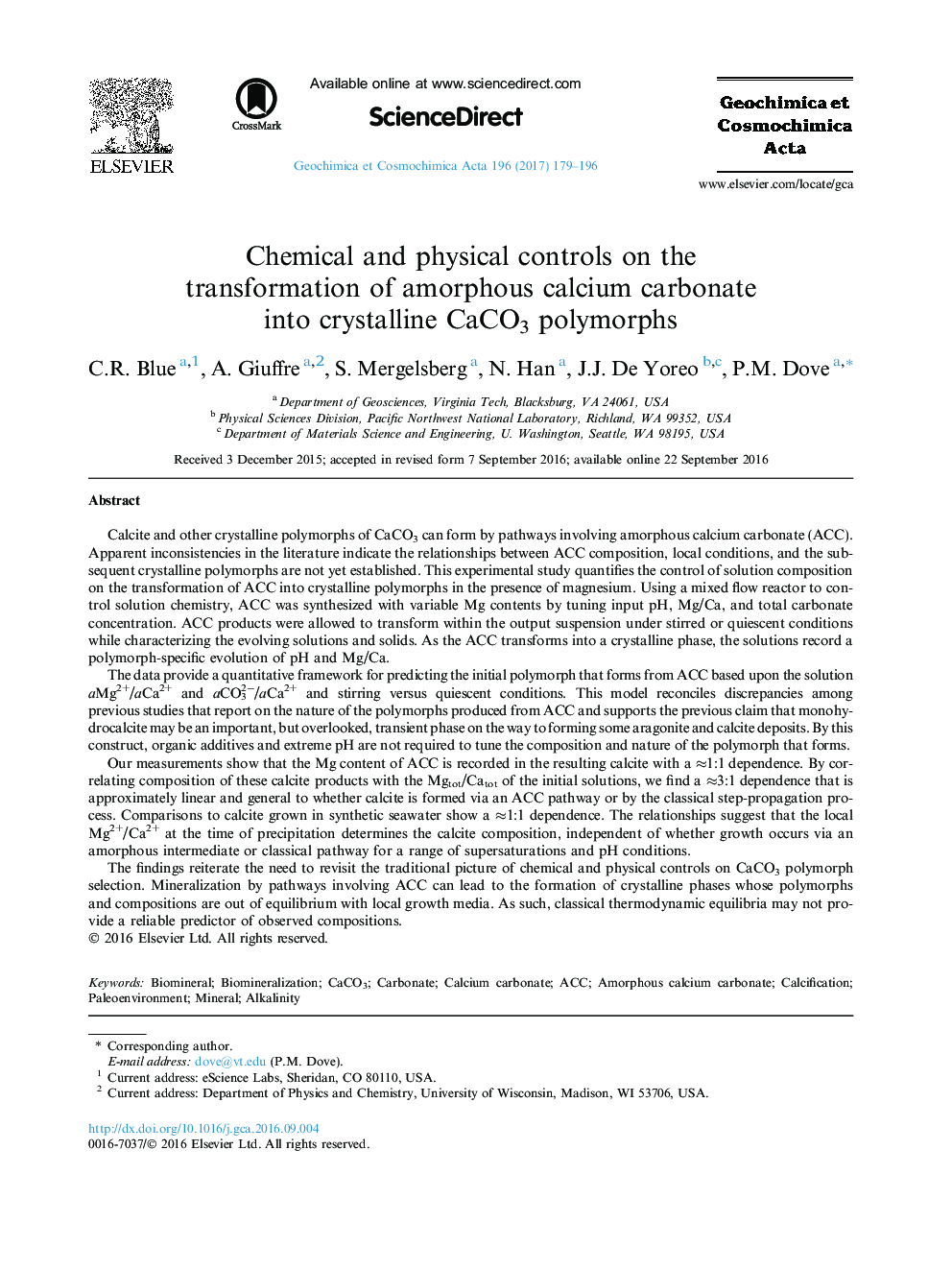| Article ID | Journal | Published Year | Pages | File Type |
|---|---|---|---|---|
| 6437107 | Geochimica et Cosmochimica Acta | 2017 | 18 Pages |
Calcite and other crystalline polymorphs of CaCO3 can form by pathways involving amorphous calcium carbonate (ACC). Apparent inconsistencies in the literature indicate the relationships between ACC composition, local conditions, and the subsequent crystalline polymorphs are not yet established. This experimental study quantifies the control of solution composition on the transformation of ACC into crystalline polymorphs in the presence of magnesium. Using a mixed flow reactor to control solution chemistry, ACC was synthesized with variable Mg contents by tuning input pH, Mg/Ca, and total carbonate concentration. ACC products were allowed to transform within the output suspension under stirred or quiescent conditions while characterizing the evolving solutions and solids. As the ACC transforms into a crystalline phase, the solutions record a polymorph-specific evolution of pH and Mg/Ca.The data provide a quantitative framework for predicting the initial polymorph that forms from ACC based upon the solution aMg2+/aCa2+ and aCO32â/aCa2+ and stirring versus quiescent conditions. This model reconciles discrepancies among previous studies that report on the nature of the polymorphs produced from ACC and supports the previous claim that monohydrocalcite may be an important, but overlooked, transient phase on the way to forming some aragonite and calcite deposits. By this construct, organic additives and extreme pH are not required to tune the composition and nature of the polymorph that forms.Our measurements show that the Mg content of ACC is recorded in the resulting calcite with a â1:1 dependence. By correlating composition of these calcite products with the Mgtot/Catot of the initial solutions, we find a â3:1 dependence that is approximately linear and general to whether calcite is formed via an ACC pathway or by the classical step-propagation process. Comparisons to calcite grown in synthetic seawater show a â1:1 dependence. The relationships suggest that the local Mg2+/Ca2+ at the time of precipitation determines the calcite composition, independent of whether growth occurs via an amorphous intermediate or classical pathway for a range of supersaturations and pH conditions.The findings reiterate the need to revisit the traditional picture of chemical and physical controls on CaCO3 polymorph selection. Mineralization by pathways involving ACC can lead to the formation of crystalline phases whose polymorphs and compositions are out of equilibrium with local growth media. As such, classical thermodynamic equilibria may not provide a reliable predictor of observed compositions.
